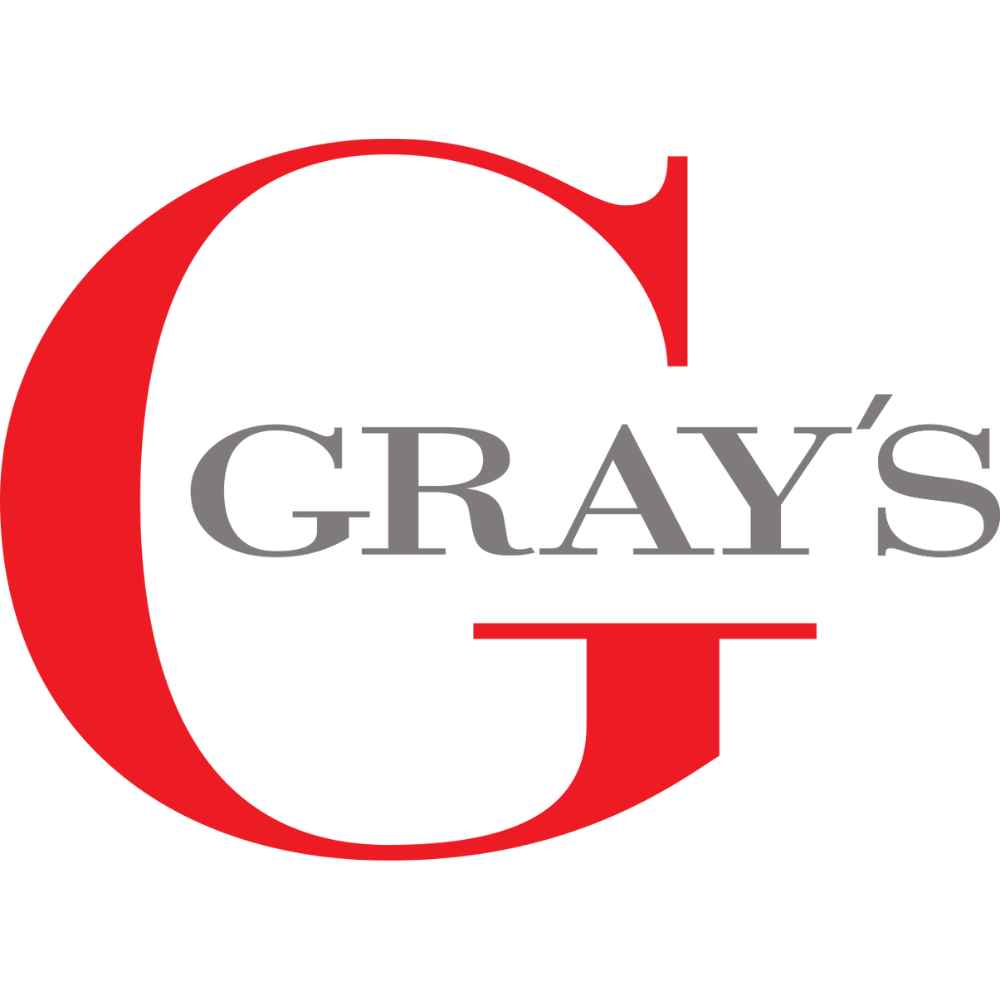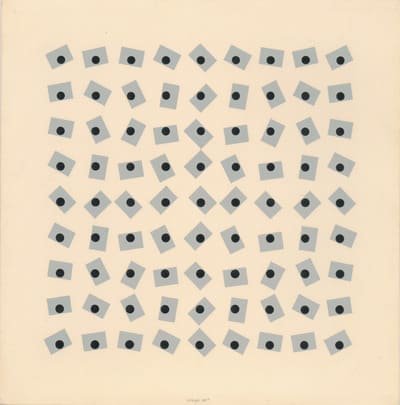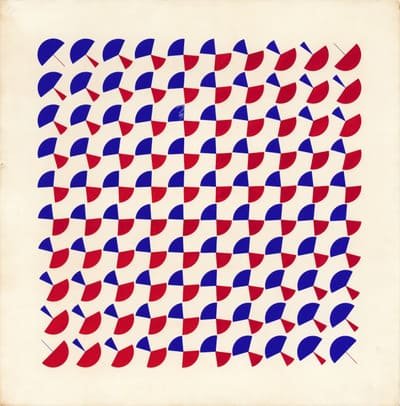Julio le Parc - The Pioneer of Kinetic Art
Julio le Parc is an Argentinean artist considered a pioneer of the Kinetic Art movement and a master of Op Art. His art is a clever interplay of color, light, and motion that breaks down the barrier between art and viewer. Founder of the Groupe de Recherche d'Art Visuel (GRAV) and a giant in the Argentinian Modern Art scene, his works have gained considerable international renown. He has sent shockwaves across the art world for seventy years, a trailblazer by nature and an artist by vocation.
Le Parc's Beginnings
Le Parc was born on September 23rd in Palmira, Argentina, within the Mendoza region, in 1928. His origins are humble, the son of an impoverished railway worker. Economic stresses forced him to move with his mother and siblings to Buenos Aires in 1943, where he took up an apprenticeship in a leather goods factory. By day he earned a living to provide for his family, and by night he pursued his passion for art.
Julio le Parc's Personal Life
Le Parc was a self-proclaimed "mediocre student." His first tender overtures into the art world began at 13, where he quickly excelled at portraits and illustrations. Gaining a place at the Academia de Bellas Artes in 1943 was a defining moment in his early career. There he discovered his admiration for the Asociación Arte Concreto-Invención (AACI) and Argentinian-born Italian artist Lucio Fontana's "Spazialismo" movement. His interests always inclined toward the disruptive, visionary, and radical. He left the academy abruptly, after four and a half years and just before graduation, as a reaction to the oppressive dictatorship of Juan Perón. He estranged himself from his family and society for over eight years. He met with extreme-left Marxist and anarchist groups, studied avant-garde art movements, and questioned the burning social issues of the time.
Le Parc's Artistic Journey
Early Works
After an eight-year self-imposed hiatus, he returned to the academy in 1950, where he began actively participating in student movement groups. He participated in his first exhibition in Brazil in 1957 and eventually graduated from the academy in 1958. He counted Rogelio Polesello (accredited with introducing Op Art to Latin America) among his graduating peers. The opportunity that would change his life came in the same year with a grant by the French Cultural Service. The grant enabled him to go to Paris, the epicenter of the art world at the time. While monotypes, paintings, and engravings dominated his early career, the move to Paris marked the beginning of his experimentation with light and illusion.
Evolution
The move to Paris proved transformational for le Parc. Here, his exploration into what we now consider his signature style began. He soon connected with artists like Vasarely, Vantongerloo, and François Morellet, and the art dealer Denise René. His relationship with René proved pivotal to the birth of kineticism. The founding of the Groupe de Recherche d'Art Visuel (GRAV) followed in 1960. The collective dominated Paris throughout the decade, determined to intertwine their identities and demand greater participation from the lay population. Their 1963 manifesto stated…
“To the best of our abilities we want to free the viewer from this apathetic dependence that makes him passively accept, not only what one imposes on him as art, but a whole system of life... We want to make him participate. We want to place him in a situation that he triggers and transforms. We want him to be conscious of his participation…”
Instability. Architectural proposition (Inestabilidad. Proposición arquitectural), One of the works for which le Parc was awarded the Special Prize (Aquisition) in the Premio Internacional Torcuato Di Tella.
GRAV eventually dissolved in the late 1960s, citing difficulties in maintaining their artistic momentum. The dissolution of GRAV failed to curb le Parc's appetite for collaboration or his intense hatred of the oppressive military regimes prevalent across South America at the time. He continued to work in several international collectives, fluidly moving between his identity as an individual and as part of a group. He connected Latin American activists to the Parisian art scene, even participating in the Paris uprising in May 1968. The incident led to a temporary year-long expulsion from his adopted home. In 1964, he won the Special Prize (Acquisition) in the Premio Internacional Torcuato Di Tella, and in 1966 he won the prestigious Grand Prize in Painting as an Individual artist at the 33rd Biennale di Venezia.
Optical & Kinetic Art
While Time Magazine coined the term "Op Art" in 1964, artists produced works from as early as the 1930s. Op is short for optical and refers to the optical illusion. With Op Art, the artist desires to disorient the viewer by altering their visual perception. It has roots in the art technique trompe l'oeil, which has been present since Greek and Roman times. Op Art pieces create the illusion of movement, distortion, or hidden imagery, even looking like a completely different work with a change of angle.
Kinetic art began as an offshoot of Op Art and encompassed all mediums. Works dependent on movement or which cause the viewer to perceive motion, whether it is indeed happening (or not,) fall within the umbrella of Kinetic art. First used in 1960, the term quickly became established vernacular.
A style blending illusion, mechanics, and social commentary fit like a glove in a decade where innovation moved quickly. New levels of consciousness in technology, psychology, and industry demanded art that matched the appetite for everything new.
Both Op Art and Kinetic Art received their worldwide debut during an exhibition called Le Mouvement held by le Parc's close friend Denise René in 1955. While the fusion of the two forms became increasingly visible throughout the 1960s, it didn't become an international craze until 1965. A show called the Responsible Eye, held in New York's Museum of Modern Art, catapulted these art forms and their proponents (including le Parc and GRAV) to global renown.
Le Parc's Notable Exhibitions
1966
- Le Parc, Howard Wise Gallery, New York, United States
- Recherches, Galerie Denise René, Paris, France
- Le Parc, Op-Art Galerie, Esslingen, Germany
- Le Parc, Grand Prix de la Biennale Venise, XXXIII Biennale Internazionale d'Arte di Venezia, Venezia, Italy
1967
- Light in Orbit, Howard Wise Gallery, New York, United States
- Le Parc, Halfmannshof, Gelsenkirchen, Germany
- Le Parc, Galerie Françoise Meyer, Bruxelles, Belgium
- Le Parc, Howard Wise Gallery, New York, United States
- IX Bienal de São Paulo, Argentinian Pavilion, Sala Especial, São Paulo, Brazil
- Retrospective, Instituto di Tella, Buenos Aires, Argentina
- Retrospective, General Electric, Montevideo, Uruguay
- Retrospective, Museo de Bellas Artes, Caracas, Venezuela
- Retrospective, Asunción, Paraguay
1968
- Cleveland Museum of Art, Light Sculpture.
- Le Parc, Galerie Buchholz and Galerie im Osram-Haus, München, Germany
- Le Parc, Punta del este, Uruguay
- Le Parc, Galería Grises, Bilbao, Spain
- Le Parc, Galleria d'Arte Naviglio 2, Milano, Italy
- Luz, espacio, movimiento. Obras de Julio le Parc, Palacio de Bellas Artes, México D.F, Mexico
- Luz, espacio, Movimiento. Obras de Julio le Parc, Museu de Arte Moderna, Rio de Janeiro, Brazil
1969
- Le Parc, Galleria de' Foscherari, Bologna, Italy
- Retrospective, Moderna Museet, Stockholm, Sweden
- Experimentplats för upplevelse av ögats, kroppens och tingens rörelser. Retrospective, Göteborgs Konsthall, Göteborg, Sweden
- Retrospective, Henie-Onstad Kunstsentef, Oslo, Norway
1970
- Kinetische Objekte, Ulmer Museum, Ulm, Germany
- Couleur 1959, Galerie Denise René rive droite, Paris, France
- 30 Multiples Série R, Galerie Denise René rive gauche, Paris, France
- Retrospective, Casa de las Américas, La Habana, Cuba
1976
- Cleveland Museum of Art, Materials and Techniques of the 20th Century.
Other Notable Works
Continual-Light-Cylinder - visitors are plunged into darkness, gazing at the awe-inspiring piece with its invisible system of moving metal discs, lamps, mirrors, and motors shooting light beams in a circle, immersing its viewers in the work.
Sphere Rouge - almost three thousand red translucent square-shaped elements drawing the impressive shape of a 5-meter wide hanging sphere.
Le Parc’s Colonne-lumineuse (1963)
Le Parc's Colonne-lumineuse holds the dual honor of being the rarest and largest ever to appear at auction. Created in 1963, it is a quintessential le Parc, dancing between light, illusion, space, and movement, simultaneously mystifying and enthralling the onlooker. Standing at almost 42 inches tall and 13 inches wide, it stands, seemingly subtle and innocuous, until switched on.
The scintillating light display transforms the viewer from spectator to actor in the throws of the final scene. The observer is mesmerized by the constantly shifting displays as the colors gently come together and fall apart as if caught up in their own secret dance, unaware of the audience.
This le Parc has impeccable provenance, first exhibited in the 1967 Light in Orbit show held at the Harold Wise gallery in New York. Following that, it found a permanent home with Henry Hawley III (1934-2019), the eminent Curator of Decorative Arts at the Cleveland Museum of Art from 1960 to 2022, Hawley purchased from the Harold Wise gallery in the same year of its exhibition. Colonne-lumineuse appeared in the 1968 "Light Sculpture" and 1976 "Materials and Techniques of the 20th Century," both held at the Cleveland Museum of Art.
Viewing Possibilities
Gray's Auctioneers has availability for virtual or in-person viewings. Please get in touch with us directly to arrange an appointment. Colonne-lumineuse is available for private sale. Reach out for more information by emailing info@graysauctioneers.com.










Sources
https://www.apollo-magazine.com/julio-le-parc-interview/
https://www.admagazine.com/cultura/julio-le-parc-escultor-pintor-argentino-20190613-5502-articulos
https://en.wikipedia.org/wiki/Julio_Le_Parc#Career
https://ocula.com/artists/julio-le-parc/
http://cvaa.com.ar/04ingles/04biografias_en/le_parc_en.php
http://www.artnet.com/artists/julio-le-parc/
https://www.perrotin.com/artists/Julio_Le_Parc/307#biography
https://prabook.com/web/julio.le_parc/3742234
https://www.wallpaper.com/art/julio-le-parc-lockdown-interview
https://www.einnews.com/pr_news/563283740/modern-art-dazzles-in-cleveland















